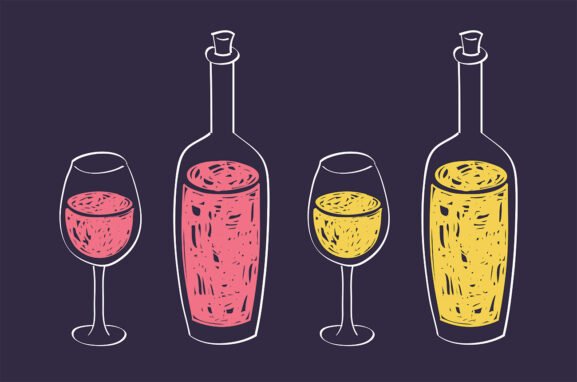Collecting Wine? Go for Diversity
Imagine you’re one of the lucky few to own a rare, one-of-a-kind item. Think about the thrill of acquiring that item. What if, years later, it becomes 30 or 50 times more valuable than what you paid for it? Would you sell this prized possession?
The seemingly impossible question is one that many wine connoisseurs struggle with at some point. Is collecting wine about pleasure or investment? Of course, collectible wines can be a worthy investment. The asset provides the potential for high returns and can diversify a portfolio. This is why, as I mentioned in my previous piece, “The Vicious (and Banal) Circle Behind Wine Collecting,” more people are embracing the hobby of collecting as an alternative to sticking money into stocks or bonds.
The shift has divided wine collectors into investors, who mainly buy to resell, and those who purchase rare bottles out of passion. As of late, soaring prices and the prestige of some investment wines see a third group joining the party—those who buy hard-to-score bottles merely to impress others. The consequence? Even more players are driving up prices.
This all begs the question, how do wine lovers who cringe at blue-chip bottle prices start a collection? Consider taking the road less traveled by seeking out less obvious labels and regions.
“If I would have spent the same amount of money over the years buying high-end Burgundy, as I did amassing my 15,000-plus bottle cellar, I could probably retire,” says Robert Dentice, a New York City-based collector who has amassed more than 27,000 followers on his @soilpimp Instagram account. “But it would not have been as intellectually rewarding, and I would not have winemaker friends literally around the world.”
Dentice is well known in the wine geek bubble and respected for his open-mindedness, curiosity and diverse style of wine-collecting. As opposed to accumulating labels coveted by the masses, he prefers to learn about, purchase and bring attention to high-quality wines and winegrowers that are at least somewhat off the beaten path. For example, he has done immense work to draw attention to Germany as “the best country to hunt for diverse cellar-worthy wines and not just Riesling,” he says.
I would agree, and add that along with Germany, Austria is another country that will decorate your cellar with incredible bottles that provide drinking pleasure and the ability to age. And they both offer a great mix of classical estates and new-wave wineries.
You May Also Like: Austria’s New Vineyard Classification System Is the First of Its Kind Outside France
Another region that Dentice and I believe has a lot to give the collector is France’s Loire Valley, which offers a plethora of prestigious and first-rate wines. Dentice points to Bernard Baudry’s Franc de Pied from Chinon to prove his point. Early in his wine journey, he says he brought a bottle “made in minuscule quantities from severely old vines” to a dinner that also featured a bunch of high-end Bordeaux and Burgundies. “It was the wine of the night,” he adds.
“The good news is it is a mere $25,” Dentice told an acquaintance at the time. (Today, the same bottle would go for $36.) “The bad news is that if you are not in the know, you will never find it, because all the geeks are crazy for this wine.” Dentice says that wine and experience “sums up my collecting style.”
Avoid the Same Old Same Old
Following this vein, he suggests looking at appellations that have not been traditionally prized or considered age-worthy by collectors. Even in Burgundy—where highly coveted wines can fetch more than $500,000—there are deals to be found if you look outside Côte-d’Or.
“I would guess most Burgundy collectors don’t focus on the Mâcon,” Dentice says. “It is an exciting region that global warming is helping, and if you can find a wine from a top winemaker there, you will have a cellar-worthy treasure.” We both praise Julien Guillot of Clos de Vignes du Maynes as one of the best-kept secrets (until now).
For fans of classic Italian wines, Valtellina represents a great alternative to those who love Barolo and Barbaresco. Rather than fork out $300 to $600 for the well-known greats, like Giuseppe Rinaldi, Bartolo Mascarello, Roagna and Cappellano, this mountainous region in Lombardy offers astonishing, age-worthy wines from the likes of Barbacàn, Garzöl and Arpepe for a fraction of the price. Bottles often cost just $60 to $90.
You May Also Like: Nebbiolo Reaches New Heights in the Alpine Vineyards of Valtellina
Even relatively unknown appellations offer a wealth of treasures awaiting discovery—and space in a cellar. For instance, I recently had the pleasure of meeting Thyge Chus Jensen of Bodega Frontio in Arribes del Duero. The vivacious Dane, who was a gas salesman in a previous life, moved to the nearly forgotten wine region because the price of land was so cheap. He has since fallen in love with the place and has produced some of the most unique wines I’ve tasted in a long time.
Of course, to compile a cohesive collection, chances are you’re going to want to include at least some bottles from traditionally famous and sought-after regions. Looking at first-generation growers or houses where there has been a generational change could lead to some pleasing surprises.
You May Also Like: Why Grower Champagne Should Be on Your Radar
Even in Champagne—where even the least expensive wines are pricey—there are vast numbers of producers whose wines outperform those from famous houses and have garnered ardent followings of devoted fans. Consider seeking out grower-producers such as Timothée Stroebel, Bonnet-Ponson, Jacques Lassaigne and Marie Courtin.
I could continue sharing examples, but it is best to experience it yourself. In today’s wine world, most regions will have at least one star worth checking out. The real goal should be to collect what you love and have fun with it, first and foremost. If you end up with a collection that appreciates drastically, sure, consider making a profit. But as Dentice notes, buying wine for the label or investment is “a risky game.”
So, would he try to make money off his hard-earned bottles? “Absolutely not,” he says.
In the Shop
Flex Your Collection
Transform your home into a wine lover’s paradise with a custom wine cellar. From design to functionality, Wine Enthusiast can create the perfect storage solution.
Published: May 23, 2024

